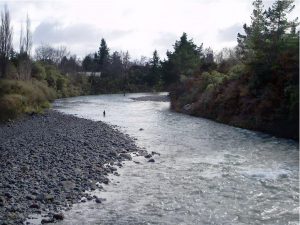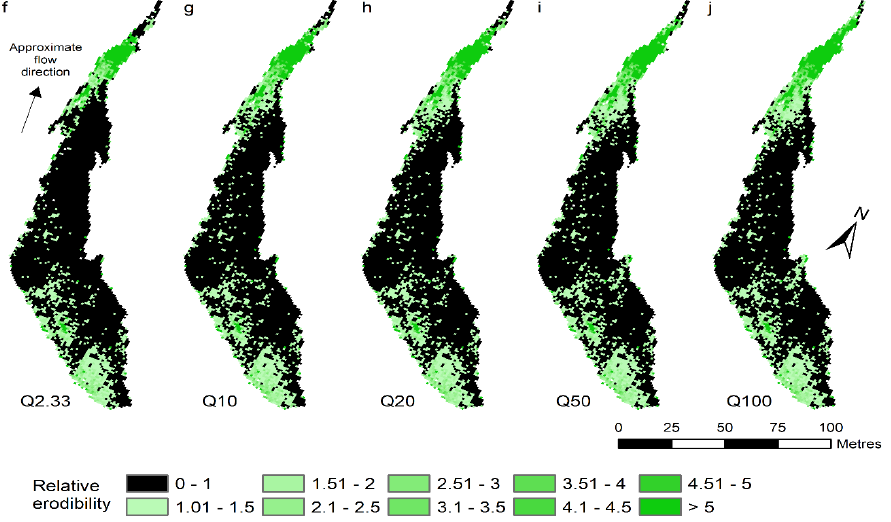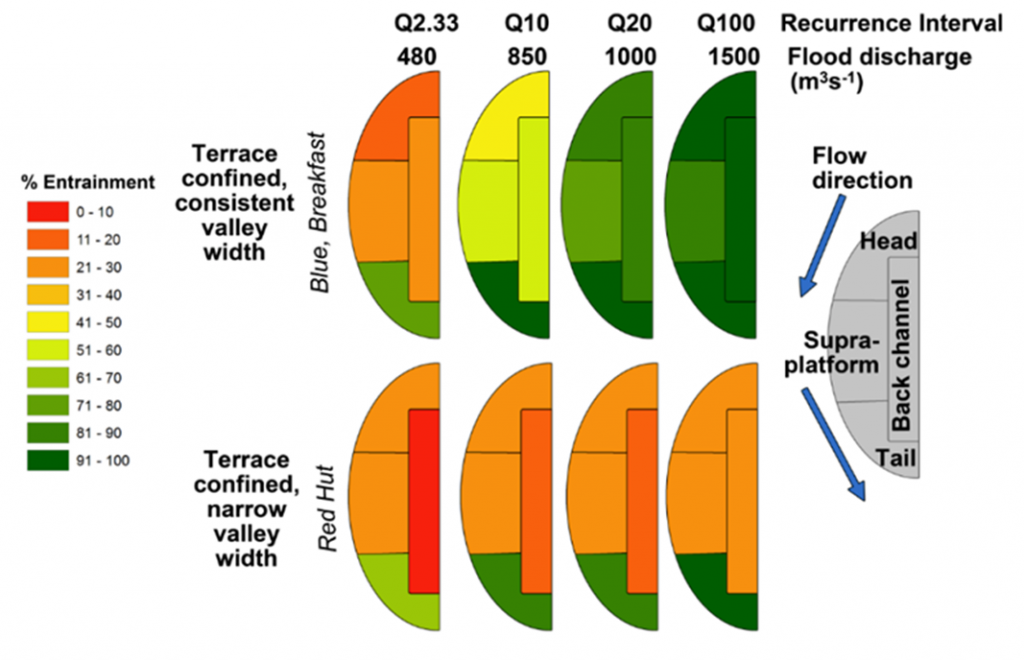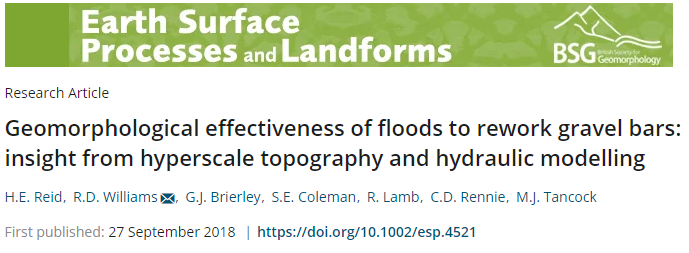New paper: Geomorphological effectiveness of floods to rework gravel bars: insight from hyperscale topography and hydraulic modelling
 A new paper by Reid et al., supported by the JBA Trust, explores how a 2D flow model can be useful in understanding the evolution of bars in a high energy gravel-bed river.
A new paper by Reid et al., supported by the JBA Trust, explores how a 2D flow model can be useful in understanding the evolution of bars in a high energy gravel-bed river.
Our aim at JBA Trust is to help improve understanding of risks in the environment, and, through that understanding, to help build resilience against those risks. Although we often focus on the water environment, the interactions between sediment, water and land are important in understanding how rivers and landscapes evolve, and play a part in shaping risks from flooding, erosion and deposition.
In previous work, we helped with a study that tested integrated hydraulic and morphological modelling (Mingfu Guan et al.) in a gravel-bed stream in the North West of England. This involved the application of a research code incorporating sediment fluxes, erosion, deposition and some secondary circulation effects within a (spatially) 2D, depth-averaged flow model.
In a new study led by Helen Reid, just accepted for publication in the journal Earth Surface Processes and Landforms, we supported co-author Richard Williams in applying a related, though simpler, approach to see whether a 2D flow model could be useful in understanding the evolution of bars in a high energy gravel-bed river. The study hinged on very high resolution data about the river bed topography and sediment characteristics acquired by Helen during field research in New Zealand. Bars are an important morphological element to study because they encapsulate a lot of information about the overall stability of a river channel.
Working with this field data, Richard simulated multiple flood events of increasing magnitude (from a mean annual flood through to an extreme, 1/100 annual exceedance probability flow) using JBA’s JFlow model. By extracting information about modelled flow depths and velocities, the authors were able to calculate and map out an “index of erodibility”, based on a ratio of bed shear stresses.

Figure 1: Relative erodibility mapped out for one of the bars
The model results, corroborated by historical evidence, showed that the bars within the river channel evolve in response to a spectrum of different magnitudes of flood events (with little sensitivity to the mean annual flood flow). The analysis also showed that the shape of the surrounding valley and floodplain influences the patterns of bar evolution, highlighting the need to consider the channel morphology in the context of a wider floodplain system.
With this type of information, Reid et al. propose a conceptual model to classify how each bar is altered by flood events of different magnitude. This is a promising approach to represent the sensitivity of the channel bars to change, taking account of the multiple sizes of flood event that drive that change.

Figure 2: Classification of bar sensitivity to change over increasing (left to right) flood magnitudes
Furthermore, the study demonstrates that even without incorporating sediment dynamics, a 2D flow model can be useful in gaining insights about channel evolution. There are clearly some limitations to such an approach, which are discussed in the paper and should be understood in applying this type of model.
The critical element in this study, however, is how the topographic and sediment data collected using terrestrial Lidar surveys was used to provide boundary conditions for flow modelling. The type of flow model applied by the authors is readily accessible, with numerous options through commercial or research-oriented software packages. With the right data in place, such modelling may be able to help add further insight to the hydromorphological analysis of a river reach.


